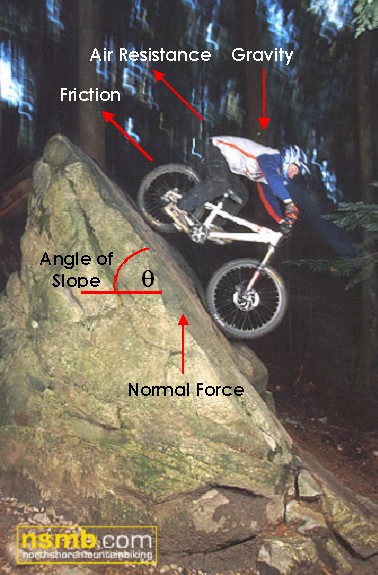

m = mass of bike and rider
g = gravitational force
A= acceleration
mu = kinetic friction coefficient
· Inertial Forces = m *A
· Frictional Force = mu * m * g * cos(theta)
· Graviational Force = m * g * sin(theta)
Gravity is the force that holds the bike to the ground and causes riding up hills challenging and riding down them easy. While gravity is acting straight down on the mountain biker, a normal force is exerted on the biker that opposes gravity. While a bicyclist pedals or rides down a hill, he or she encounters an acceleration, and this is due to either gravity or the potential energy stored in the biker’s muscles. When accelerating from rest, inertia is the biggest force encountered. But once the biker gains momentum, this force is no longer the main opposing force. The mass of a mountain biker is dependent upon the weight of the bike and of the individual. This mass can be easily calculated by multiplying the combined weight of the bike and its rider in kilograms by the gravitational force exerted by the earth. These forces and more are discussed throughout the rest of this web page.

Image courtesy of NSMB.com
Force Diagram Drawn By Brandon Locke